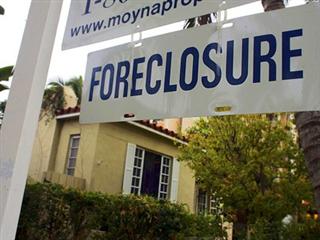
LONG ISLAND, NY - A county legislator has proposed a method to make workforce housing lemonade out of the nationwide mortgage crisis lemon. Legislator Ed Romaine (R-Center Moriches) introduced a bill Monday that would authorize Suffolk to buy up foreclosed and abandoned homes, rehabilitate them where necessary, and then resell them as affordable housing. He called for the county to use $5 million of its affordable housing fund coupled with about $5.5 million in funding made available to Suffolk in the federal Housing and Economic Recovery Act of 2008.
As of the end of August, banks were holding 2,870 foreclosed Suffolk homes, while 5,200 county homeowners were already 30 days or more late on their mortgage payments, according to a county executive spokesman. "I truly believe that if we hustled at this we could do 100 foreclosures in 2009 and start making a dent," Romaine said.
Due to the credit crisis, banks are increasingly the only bidders at auctions of the foreclosed homes and their mortgages, meaning more and more properties are going vacant, deteriorating and driving down neighboring property values, according to Romaine. Banks have no use for the empty homes, the legislator argued, but Suffolk does. As a result, and due to the county's willingness to buy in bulk, the lending agencies would likely sell the properties to the county at or even below the outstanding mortgage costs, Romaine reasoned.
Suffolk would then utilize nonprofit agencies like the Long Island Housing Partnership or Community Development Corporation to perform whatever physical rehabilitation was necessary and then find qualified buyers, Romaine said. The nonprofits would precertify the buyers, provide them with mortgage counseling and lead them to any available homebuyers' funding. Romaine figures that the county can sell the homes at equal to or below the combined cost of buying them off banks and remediating them. He envisions Suffolk purchasing homes valued in the $250,000 to $400,000 range and making them available to Long Island's lower-income workers, those making at least $60,000 and able to support monthly mortgage payments, for between $200,000 and $300,000. Revenue from the sales would be used to purchase yet more abandoned homes, repeating the process. "Even if we had to take a loss we would still have money coming back to us and would continue this program on for a number of years," Romaine said.
The legislator said the program would target foreclosures in "low to middle income neighborhoods" that have been hard hit by the foreclosure crisis, including Huntington Station, Brentwood, Flanders and Central Islip. Large affordable housing installations tend to draw opposition from residents opposed to dramatic hikes in the number of students their district must educate, as well as potential deleterious effects on surrounding property values. Using foreclosed homes circumvents both objections, according to Romaine.
Unlike the county executive's plan for a large, workforce housing community in Yaphank, this plan would disperse participants across many of Suffolk's neighborhoods, meaning that no individual school district would face the total burden of new enrollees, Romaine argued. And as the homes had been occupied prior to the mortgage crisis, district enrollment would merely return to status quo, he said. Meanwhile, vacant homes tend to become run down while attracting vandals and squatters, decreasing neighboring property values. Resettling those properties therefore only stands to protect nearby homeowners' investment, the legislator reasoned.
"The longer we delay the worse this crisis is going to become," Romaine said. "Let's try to stabilize our neighborhoods." If the idea sounds so sensible you wonder why they aren't implementing a similar plan across the country, well, they are, according to County Executive Steve Levy. "It's basically a redundant bill to what is a federal law that passed last summer," Levy said. His administration lobbied hard to secure $11 million from HUD made available under the federal program; Suffolk is set to use the funds to buy foreclosures and flip them for workforce housing, the county executive added. "The bus has already left the station on this," he quipped.
In addition to being unnecessary, Levy opposes Romaine's plan for its ability to undermine successful county efforts to establish workforce housing in areas not subject to heavy foreclosure. Some examples include the county's role in building affordable housing in Patchogue, Mattituck, the former Pilgrim State Psychiatric Center, and in subsidizing developers across the county to include some affordable units in new communities under construction, he said. "It's insanity to say you can only use affordable housing money on foreclosures," Levy said. "It would basically close down the affordable housing program in Suffolk."
Source: TimesOfSmithTown.com